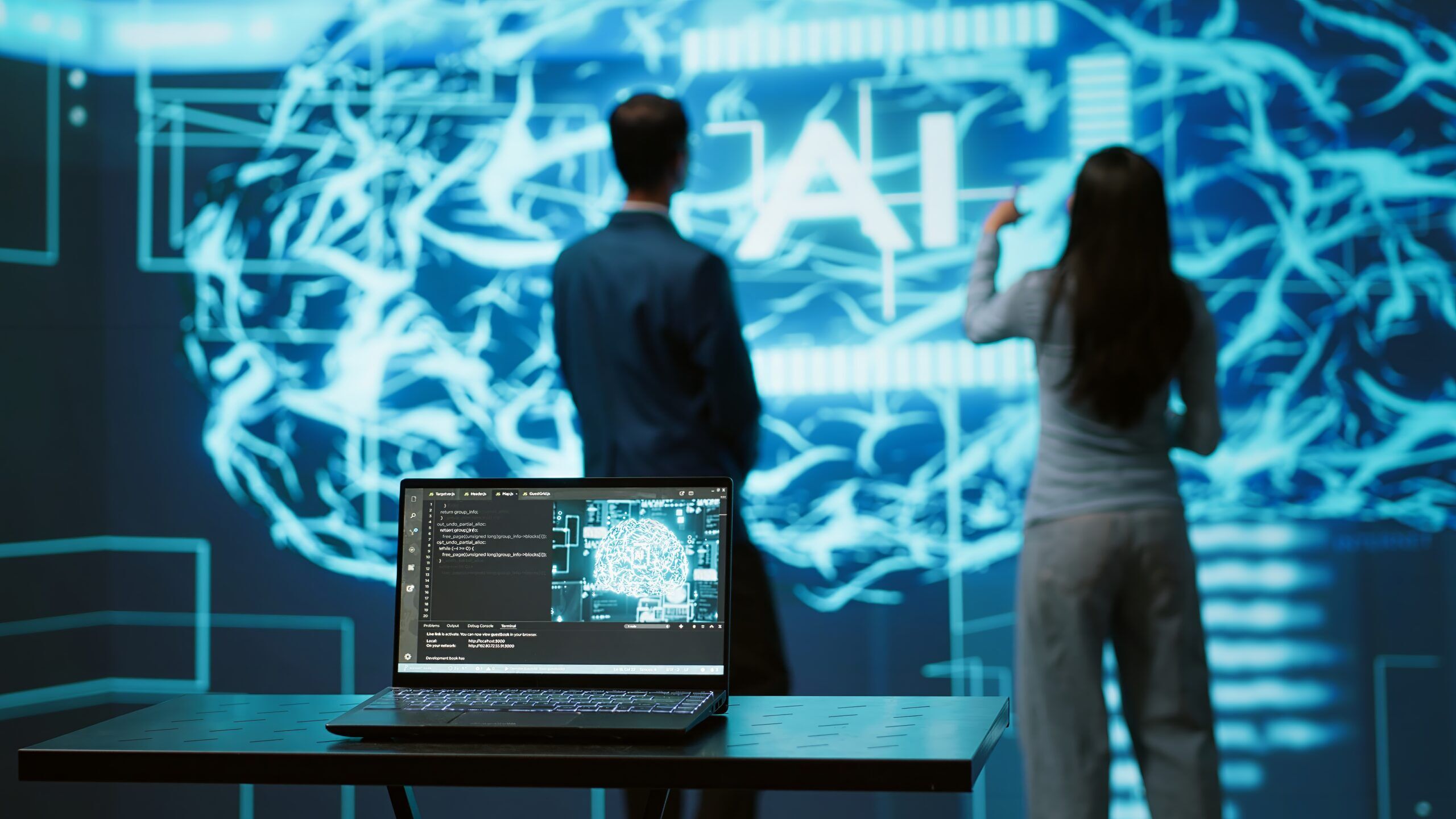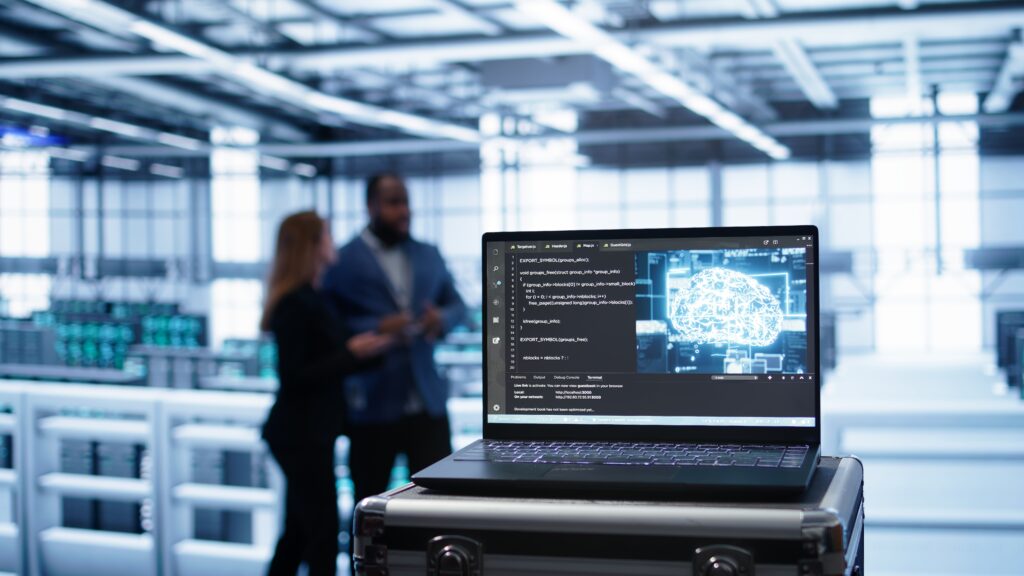
The “smart factory” concept is outdated. For leaders overseeing complex manufacturing, the challenge isn’t just generating data – it’s achieving genuine operational intelligence.
That pivot is defined by the necessary fusion of Artificial Intelligence (AI) and Digital Twins.
This combination is the undisputed foundation of Industry 4.0, moving factories beyond mere connectivity to genuine autonomy. The Digital Twin provides the single source of truth – a living, virtual replica of every asset and process. AI is the engine that uses this replica to do something unprecedented: it allows you to simulate the future of your operations.
If you are serious about Industry 4.0, this is the core relationship you must understand because its capability is strategic. It cuts unplanned maintenance dramatically, accelerates time-to-market, and shifts decision-making from reactive crisis management to prescriptive command.
Table of Contents
Shifting from Predictive to Prescriptive
The most immediate and tangible benefit of combining AI with Digital Twins is the change it brings to asset maintenance.
Historically, maintenance was reactive (fixing a machine after it broke) or preventive (scheduled maintenance, often leading to unnecessary part replacements or inspections). Industry 4.0 introduced predictive maintenance, using data to forecast when a machine might fail.
Now, the AI-enhanced Digital Twin pushes us into the era of prescriptive maintenance.
- The Digital Twin’s Role: It creates a real-time, virtual simulation of a machine, mirroring its physical condition, performance, and environment. Sensor data feeds continuously into the twin.
- AI’s Role: AI algorithms analyze this massive data stream within the twin to not only predict a failure but also to simulate the best possible solution and deliver it as an actionable command. For example, the AI can test different load-balancing scenarios within the twin to see which one most effectively delays the predicted failure until a scheduled break.
The financial results are clear: companies using AI-driven maintenance see a 35% to 45% reduction in unplanned downtime (Kabashkin et al., 2025; Preprints.org, 2025). This significant reduction in operational disruption often yields a high Return on Investment (ROI). While exact ROI varies, the gains are substantial enough to establish prescriptive maintenance as a priority (Preprints.org, 2025). The ability to detect anomalies earlier, evaluate counterfactuals virtually, and deploy scheduled repairs with less risk shortens the time from deviation to decision (MDPI, 2025).
The Virtual Lab: Accelerating Time-to-Market
The Digital Twin and AI combination transforms product and process development by moving complex operations into a safe, virtual environment – the “virtual lab.”
In traditional manufacturing, developing a new product or optimizing a production line requires expensive, physical prototypes and long, iterative testing cycles. Each physical test uses time, material, and energy.
The AI-enhanced Digital Twin allows manufacturers to design, test, and validate products and entire production lines virtually.
- Design and Validation: An engineer can load a new product design into the Digital Twin of the factory floor. The AI then simulates millions of production cycles, testing for bottlenecks, stress points, and potential faults before a single piece of physical equipment is dedicated to the task.
- Process Optimization: For a live production line, the twin can be used to run ‘What If?’ scenarios—for example, testing how a new material supplier or a change in robot speed impacts the final product quality and throughput. The AI runs these scenarios in minutes, prescribing the most efficient and least wasteful setup.
This virtual approach helps companies reduce material waste by 20% and cut their time-to-market by up to 50% (Frontiers, 2025). This is a game-changer for competitiveness, allowing organizations to respond faster to market demands and bring innovation to customers quickly. The twin’s ability to mirror production processes allows for significant optimization and continuous improvement, which can lead to a 30% reduction in material waste in specific sectors like metalworking (Frontiers, 2025).
Augmentation is the New Automation
Industry 4.0 is not about replacing people; it is about augmenting their capabilities. The most successful transformations focus on empowering people with better information and better tools, shifting their role from simple operators to proactive, informed decision-makers.
The data generated by the Digital Twin, which is then processed and simplified by AI, is the primary tool for this augmentation. AI-driven analytics turn vast streams of raw data into simple, prioritized instructions that empower a technician or manager to act effectively.
The growth trajectory for this technology confirms that organizations are betting big on this new operating model: the Digital Twin market is expected to grow at a Compound Annual Growth Rate (CAGR) of 35.9% (2025–2029) (MDPI, 2025), a strong indication that this integration is not a temporary trend but the foundation of the next industrial era. This growth reflects the recognition across various industries, from oil and gas to automotive, that the Digital Twin is capable of enhancing asset management, safety, and the decision-making process (MDPI, 2025).
Conclusion
AI and Digital Twins are not separate technologies; they are the integrated central nervous system of Industry 4.0. The Digital Twin provides the structure, the real-time context, and the safe virtual space, and the AI provides the intelligence, the predictive power, and the autonomy.
For Adanto Software clients and all business leaders, the message is clear: adopting this synergistic approach moves your organization from merely collecting data to intelligently acting on it. It’s the path to operational efficiency, faster innovation cycles, and a truly resilient enterprise.
Want to use AI in your business?
Get in touch with the Adanto Software Team today to see how we can help.



